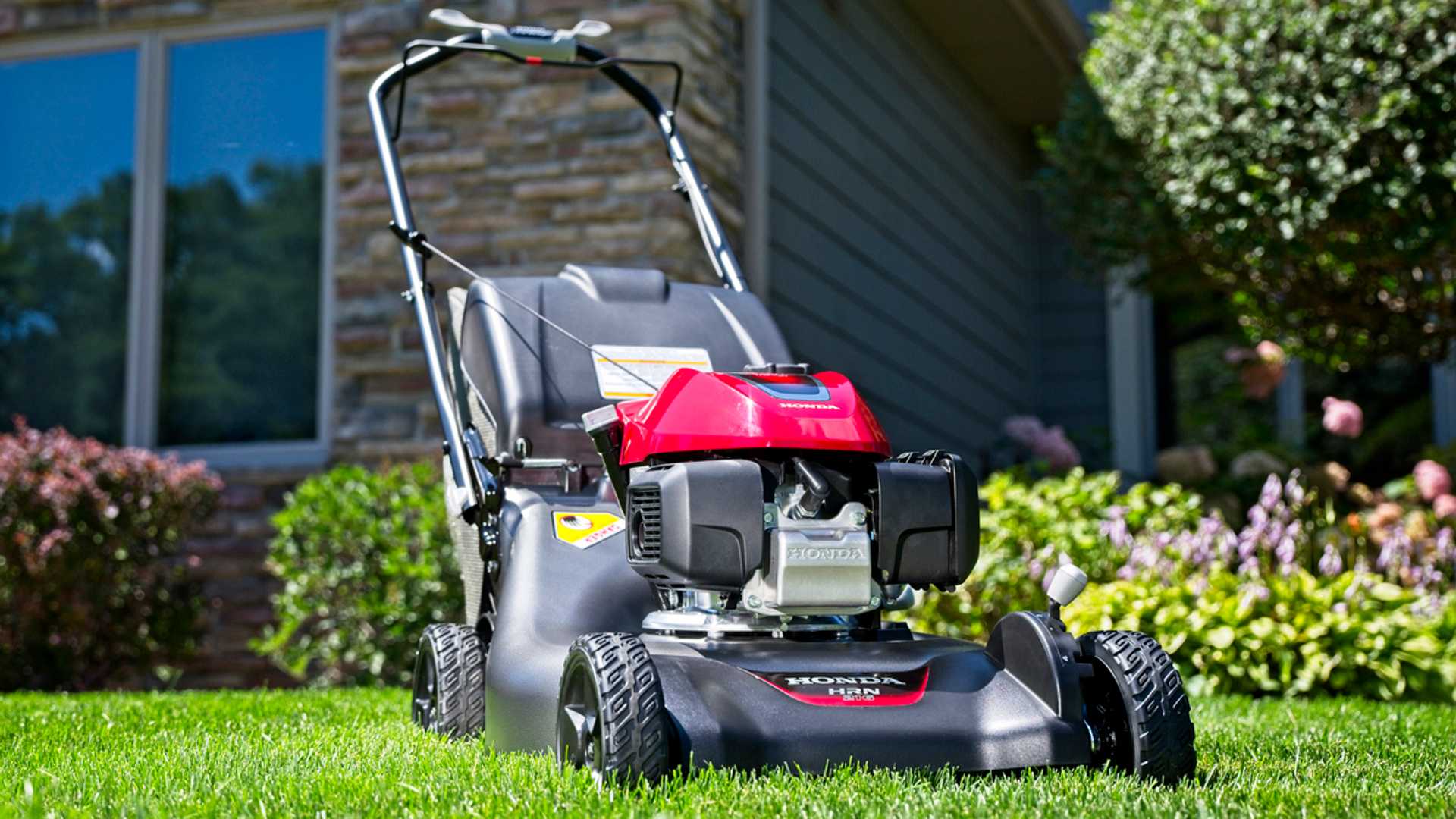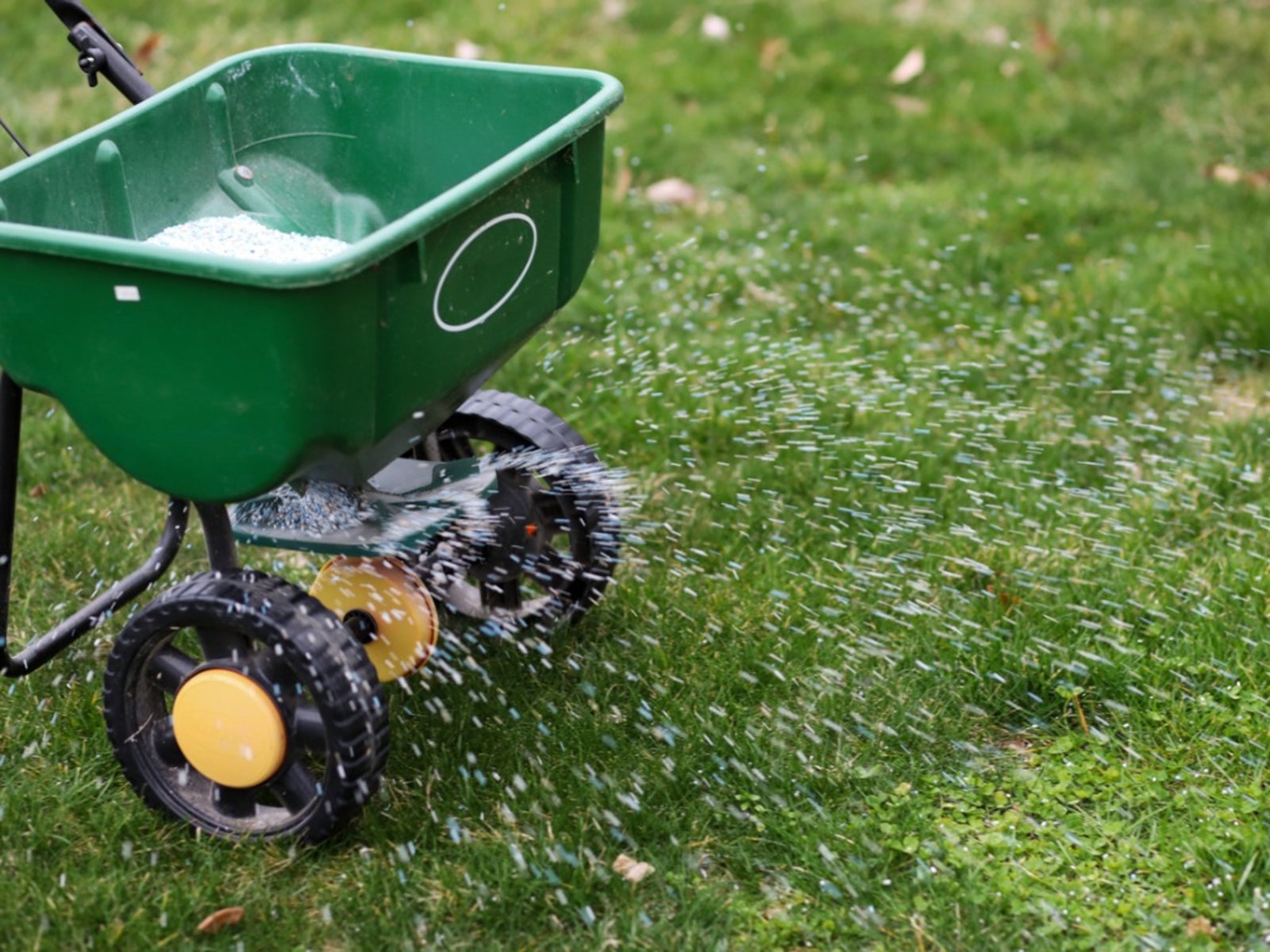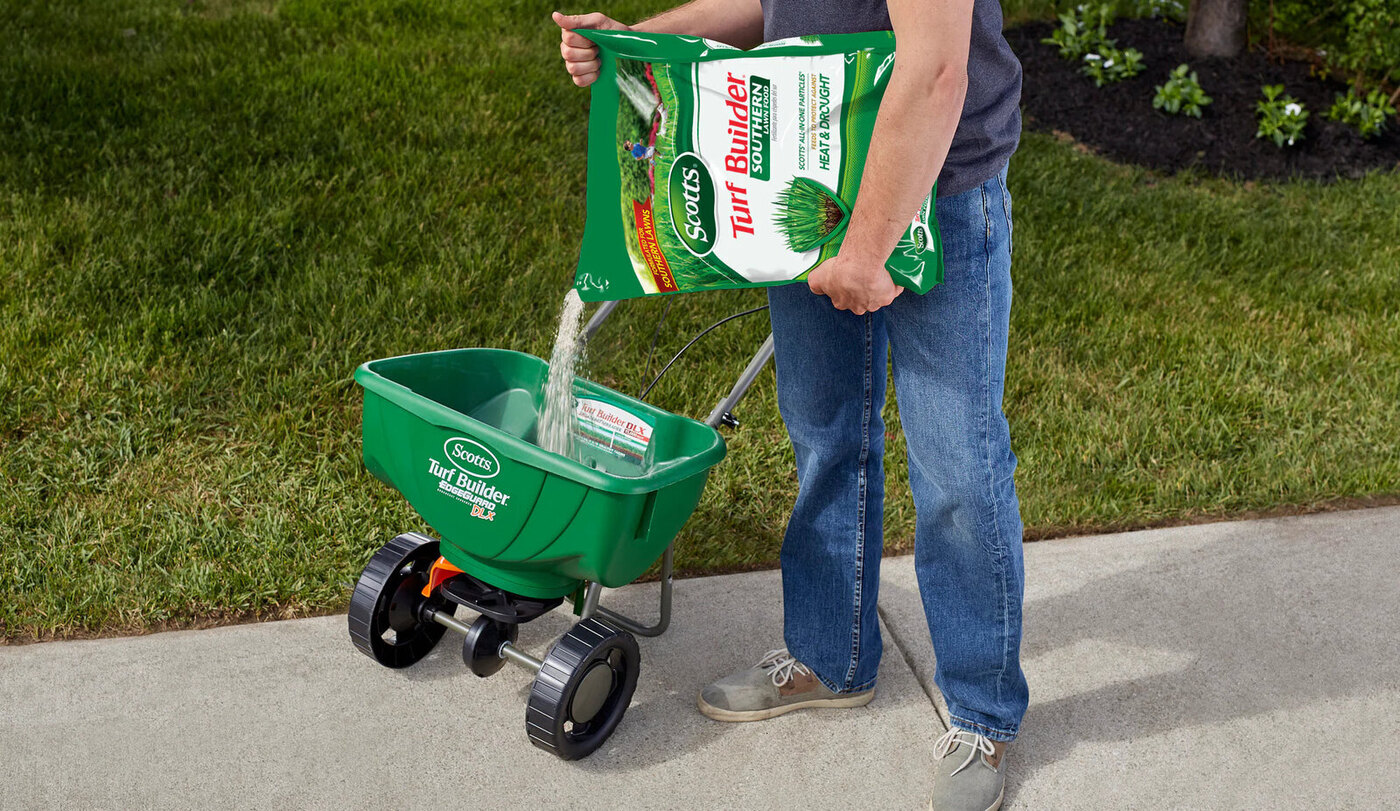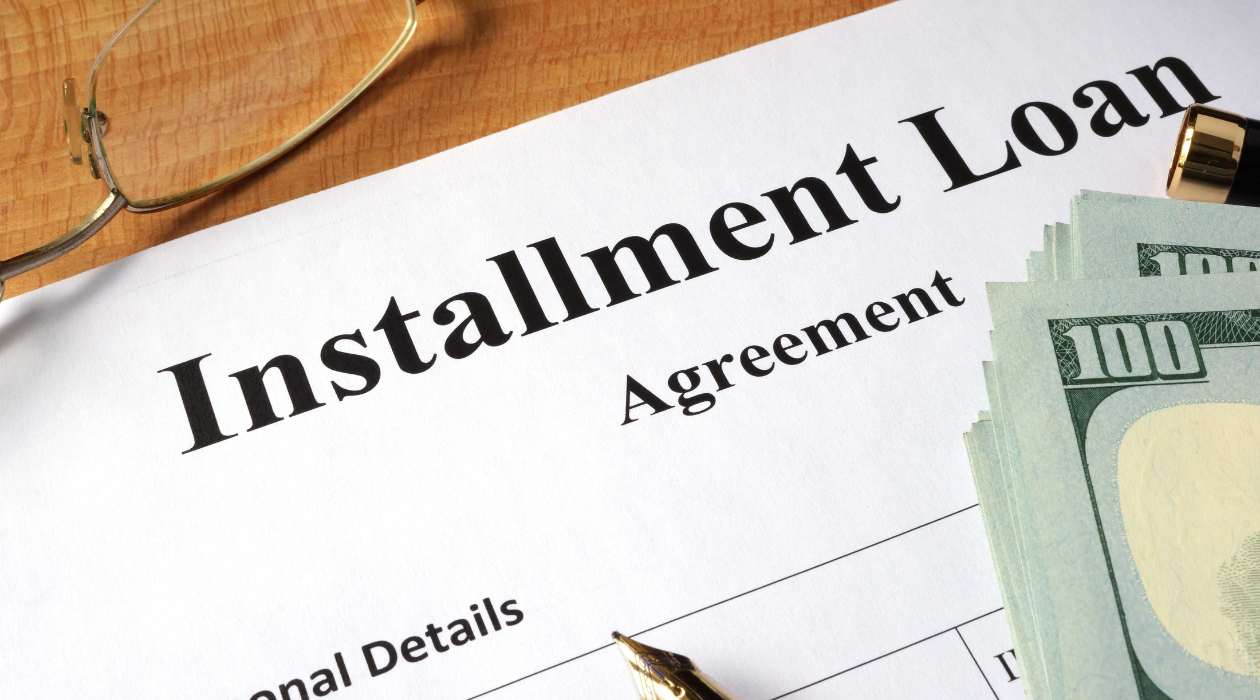Home>Garden Essentials>How To Collect Payment For Lawn Care


Garden Essentials
How To Collect Payment For Lawn Care
Modified: October 20, 2024
Learn how to efficiently collect payment for your garden and lawn care services. Get tips and strategies to ensure timely and hassle-free payments.
(Many of the links in this article redirect to a specific reviewed product. Your purchase of these products through affiliate links helps to generate commission for Storables.com, at no extra cost. Learn more)
Introduction
Welcome to the world of garden care! If you’re a professional gardener or lawn care service provider, you know that maintaining a beautiful garden requires not only hard work but also effective management of your business. One crucial aspect of running a successful garden care business is ensuring that you collect payments from your clients in a timely and efficient manner.
In this article, we will explore the various strategies and best practices for collecting payment for your lawn care services. From establishing clear communication with clients to setting up payment terms and policies, we will cover everything you need to know to streamline your payment collection process. So, let’s dig deep and discover how you can effectively collect payment for your garden care services!
Key Takeaways:
- Clear communication, detailed invoicing, and offering multiple payment methods are crucial for smooth payment collection in lawn care services. Building trust and maintaining professionalism are key to successful client relationships.
- Implementing effective payment reminder strategies, handling disputes professionally, and continuously improving payment collection systems are essential for financial stability in a lawn care business. Prioritizing customer service and clear policies is key.
Ensuring Clear Communication with Clients
Effective communication is the foundation of any successful relationship, including the one you have with your clients. When it comes to collecting payment for your lawn care services, it is essential to establish clear and transparent communication channels from the very beginning.
First and foremost, make sure to discuss your payment terms and policies with your clients during the initial consultation or contract signing. Clearly explain the frequency of payments, accepted payment methods, and any late payment penalties or fees. This will help to avoid any misunderstandings or surprises down the line.
It’s also crucial to provide your clients with a detailed explanation of the services you will be providing and the associated costs. This can be done through a written estimate or a formal proposal. By providing a breakdown of the costs, your clients will have a clear understanding of what they are paying for and can make an informed decision.
In addition, always be open and available to answer any questions or concerns your clients may have regarding payment. Encourage them to reach out to you if they need clarification or assistance. This level of open communication will foster trust and ensure that your clients feel comfortable when it comes to paying for your services.
Lastly, consider implementing a system that allows your clients to easily contact you if they have any payment-related issues. This can be a dedicated email address or a customer service hotline. By providing a direct line of communication, you can address and resolve any payment concerns promptly, ensuring a smooth payment collection process.
Remember, clear communication is key to establishing trust and maintaining a strong relationship with your clients. By setting expectations, providing transparency, and being responsive, you can pave the way for a seamless payment collection process.
Setting Up Payment Terms and Policies
Establishing clear payment terms and policies is essential for smooth and efficient payment collection. By clearly defining your expectations and requirements, you can avoid payment delays and disputes. Here are some important factors to consider when setting up payment terms and policies for your lawn care services:
1. Payment Frequency: Determine how often you will invoice your clients for your services. It could be weekly, bi-weekly, monthly, or based on a project basis. Communicate this to your clients upfront so that they know when to expect invoices.
2. Accepted Payment Methods: Specify the payment methods you are willing to accept. Include options like cash, check, credit card, or online payment platforms. Offering multiple payment options increases convenience for your clients and improves the chances of timely payments.
3. Late Payment Penalties: Consider including late payment penalties or fees in your terms and policies. This will incentivize clients to make timely payments and compensate you for any inconvenience caused by delays. Be sure to clearly communicate these penalties to avoid misunderstandings.
4. Discounts or Incentives: Consider offering discounts or incentives for prompt payment. For example, you could offer a small percentage discount for clients who pay within a certain time frame. This encourages clients to pay on time and rewards their promptness.
5. Payment Due Dates: Clearly state the due dates for each invoice. This provides your clients with a specific deadline for making payments, ensuring that you receive funds in a timely manner. Consider sending out payment reminders a few days before the due date to encourage prompt payment.
6. Cancellation and Refund Policy: Outline your cancellation and refund policy in case a client needs to cancel or modify their service agreement. Define any applicable fees or conditions for cancellations or refunds.
7. Written Contracts: Whenever possible, use written contracts that outline the terms and conditions of your services. This provides a clear reference point for both you and your clients, minimizing misunderstandings and disputes.
Remember, your payment terms and policies should be fair and reasonable but also protect your interests as a business owner. Clearly communicate these policies to your clients before starting any work to ensure everyone is on the same page regarding payment expectations.
Accepting Different Payment Methods
In today’s digital age, it is important to offer your clients a variety of payment methods to accommodate their preferences and ensure smooth transaction processing. By accepting different payment methods, you can make it easier for your clients to pay for your lawn care services. Here are some popular payment methods you can consider:
1. Cash: Accepting cash payments is a traditional and straightforward method. Many clients still prefer paying in cash, so make sure to have a secure way to handle and track cash transactions. Consider providing a receipt for each cash payment received.
2. Checks: Some clients may prefer to pay by check. Make sure to clearly communicate the process for writing and mailing checks, and provide instructions on who they should be made payable to. It’s important to have a clear policy for bounced checks and any associated fees.
3. Credit or Debit Cards: Accepting credit or debit card payments is a convenient option for both you and your clients. You can set up a merchant account with a payment gateway provider to securely process card payments. You may need to pay transaction fees, but it can streamline your payment collection process.
4. Online Payment Platforms: Consider using online payment platforms such as PayPal, Stripe, or Square. These platforms allow your clients to make secure online payments using credit cards, debit cards, or their own PayPal account. Integrating such platforms in your website or sending payment links via email can simplify the payment process.
5. Mobile Payment Apps: With the rise of mobile technology, mobile payment apps like Apple Pay, Google Wallet, or Venmo have become increasingly popular. These platforms allow clients to make payments quickly and conveniently using their smartphones or other mobile devices.
6. Bank Transfers: Another option is to allow clients to make direct bank transfers to your business account. Make sure to provide them with your account details and clearly communicate the process for initiating transfers. Keep in mind that it may take a few business days for the funds to reflect in your account.
7. Payment Plans or Installments: For larger projects or ongoing services, you may want to offer payment plans or installment options to make it more affordable for your clients. Clearly outline the terms and conditions of these payment plans, including due dates and any associated fees.
It’s important to communicate to your clients the payment methods you accept and provide clear instructions on how to make payments using each method. Consider displaying the accepted payment methods on your website, invoices, or any other communication channels you use to interact with clients.
By accepting multiple payment methods, you can cater to a wider range of client preferences and improve the overall payment experience for both parties involved.
Creating Invoices for Lawn Care Services
Creating professional and detailed invoices is essential for effective payment collection in your lawn care business. An invoice serves as a formal record of the services provided, the associated costs, and the payment due. Here are some key considerations when creating invoices for your lawn care services:
1. Include Your Business Information: Begin the invoice by prominently displaying your business name, logo, address, and contact information. This helps to establish your professionalism and makes it easy for clients to reach out to you with any payment-related queries.
2. Client Details: Clearly mention the name, address, and contact information of the client to whom the invoice is being sent. Double-check the accuracy of these details to avoid any confusion or delays in payment processing.
3. Invoice Number and Date: Assign a unique invoice number to each invoice you generate. This helps with organization and tracking. Also, clearly indicate the date on which the invoice was created.
4. Breakdown of Services: Provide a detailed breakdown of the services you provided to the client. Include the date, type of service (e.g., mowing, trimming, fertilization), and the duration or size of the job. Be as specific as possible to avoid any confusion regarding the services rendered.
5. Costs and Rates: Clearly state the cost of each service provided. If you have different rates for different services or variations based on job complexity, clearly indicate these rates. Calculate the total amount owed for the services provided.
6. Additional Charges: If there are any additional charges or fees like taxes, late payment penalties, or equipment rental fees, clearly state them on the invoice. This helps in providing transparency and ensuring that clients are aware of any extra costs.
7. Payment Terms and Due Date: reiterate the payment terms and due date on the invoice. Clearly communicate when the payment is expected and the acceptable payment methods. This helps in avoiding any confusion or delays in payment processing.
8. Payment Instructions: Provide clear instructions on how the client can make payment. Include your preferred payment methods (such as check, bank transfer, or online payment platforms), along with any necessary details like your bank account information. Help your clients understand the payment process and make it as hassle-free as possible.
9. Contact Information: Include your contact information again on the invoice so that clients can easily reach out to you with any payment-related questions or concerns. This shows your commitment to customer service and helps in building trust with your clients.
10. Professional Design: Design your invoice in a professional and visually appealing manner. You can use invoice templates available in software applications or online platforms to create consistent and well-designed invoices that reflect your brand identity.
Remember to keep copies of all invoices for your records and consider implementing a system to track invoice payments. Utilizing accounting software or invoicing platforms can automate these tasks and streamline your payment collection process.
By creating clear, detailed, and professional invoices, you can effectively communicate the services provided and facilitate prompt and accurate payment from your clients.
Establishing a Payment Collection System
A well-defined payment collection system is crucial for ensuring a smooth and efficient process for receiving payments from your clients. By establishing a system, you can streamline your accounting procedures, reduce the risk of payment delays, and maintain a positive cash flow. Here are some steps to help you establish an effective payment collection system:
1. Choose a Payment Management Platform: Consider using a payment management platform or accounting software to streamline and automate your payment collection process. These tools can handle invoices, track payments, send reminders, and generate reports, saving you valuable time and effort.
2. Set Up a Billing Schedule: Establish a regular billing schedule that aligns with your payment terms. For example, you can send invoices on a weekly, bi-weekly, or monthly basis. Consistency in sending invoices helps clients anticipate payment due dates and simplifies your accounting process.
3. Send Professional Invoices: As discussed earlier, create professional invoices that clearly outline the services provided, associated costs, and payment due dates. Use clear language and professional design to enhance the credibility of your invoices.
4. Offer Convenient Payment Options: Allow your clients to make payments using various methods, such as cash, check, credit card, debit card, or online payment platforms. The more options you offer, the higher the chances of receiving timely payments.
5. Provide Receipts: Issue receipts for all payments received. This not only serves as proof of payment, but it also helps to maintain transparency and build trust with your clients.
6. Automate Payment Reminders: Utilize your payment management platform to send automated payment reminders to clients a few days before the payment due date. This helps to minimize forgetfulness or oversight on their part and encourages on-time payments.
7. Enforce Late Payment Penalties: Clearly communicate your late payment penalties to clients and enforce them when necessary. This will discourage late payments and emphasize the importance of adhering to the agreed-upon payment terms.
8. Regularly Review Accounts Receivable: Regularly review your accounts receivable to identify any outstanding payments. Follow up with clients who have not made payments within the specified time frame. Maintain open communication to resolve any issues or misunderstandings promptly.
9. Implement a Collections Process for Delinquent Accounts: If a client consistently fails to make payments despite reminders and follow-ups, you may need to implement a collections process. This may involve sending formal collection letters, seeking legal action, or involving a collections agency as a last resort.
10. Continuously Improve and Adjust: Regularly assess the effectiveness of your payment collection system and make adjustments as needed. Monitor payment trends, evaluate client feedback, and stay updated with industry best practices to optimize your system.
By implementing a well-structured payment collection system, you can reduce payment delays, improve cash flow, and maintain healthy client relationships. Prioritize transparency, efficiency, and professionalism to ensure a seamless experience for both you and your clients.
Consider setting up a recurring payment system with your clients to ensure consistent and timely payment for your lawn care services. This can be done through online payment platforms or by setting up automatic bank transfers.
Sending Payment Reminders and Follow-ups
As a lawn care service provider, sending timely payment reminders and follow-ups is essential for maintaining a steady cash flow and ensuring that your clients fulfill their financial obligations. Here are some key strategies for sending effective payment reminders and follow-ups:
1. Determine the Ideal Timing: Consider the payment terms you have set and determine the appropriate timing for sending payment reminders. Typically, sending reminders a few days before the payment due date is recommended to allow ample time for processing.
2. Use Professional and Friendly Language: When composing payment reminder emails or messages, adopt a professional and friendly tone. Avoid sounding accusatory or confrontational. Instead, be polite, concise, and remind the client of the outstanding payment in a positive manner.
3. Include Essential Details: In your payment reminders, include key information such as the invoice number, amount owed, due date, and accepted payment methods. Make it easy for clients to understand the payment requirements and provide them with all the necessary information to complete the payment.
4. Offer Assistance and Clarification: In case a client has questions or concerns regarding the payment, ensure that you are readily available to provide assistance or clarify any issues. This demonstrates your commitment to customer service and helps to build a positive relationship.
5. Personalize Communication: Whenever possible, personalize your payment reminders by addressing clients by their name. This adds a personal touch and shows that you value and recognize them as individual customers.
6. Automate Reminder Emails: Utilize your payment management platform or accounting software to automate the process of sending payment reminders. Set up personalized email templates that can be automatically triggered a few days before the payment due date. This saves time and ensures consistency in your follow-up process.
7. Follow Up with Phone Calls or Personalized Emails: If a client has not responded to your initial payment reminder, consider following up with a phone call or a personalized email. This shows a proactive approach and provides an opportunity for direct communication to resolve any issues or concerns.
8. Maintain Professionalism and Persistence: While it is important to be persistent in your payment follow-ups, always maintain professionalism and avoid becoming aggressive or confrontational. Persistent but polite reminders will encourage clients to take action without damaging your business relationship.
9. Send Thank-You Notes: Once a client has made the payment, send a brief thank-you note to express your appreciation. This not only shows gratitude but also reinforces a positive relationship with the client.
10. Regularly Evaluate and Improve: Continuously evaluate the effectiveness of your payment reminder and follow-up process. Analyze response rates, payment patterns, and client feedback to identify areas for improvement and implement necessary changes.
By implementing effective payment reminder and follow-up strategies, you can increase the likelihood of timely payments and maintain a healthy cash flow in your lawn care business. Remember to strike a balance between persistence and professionalism to preserve positive client relationships while ensuring financial stability.
Dealing with Late or Non-Payments
While it is always preferable to receive payments on time, you may occasionally encounter late or non-payments from clients. Dealing with these situations promptly and professionally is crucial to protect your business’s financial health. Here are some steps to follow when handling late or non-payments:
1. Assess the Situation: Before taking any action, gather all the necessary information about the late or non-payment, including the invoice details, communication history, and any agreements made with the client. This will help you have a clear understanding of the situation.
2. Reach Out to the Client: Send a polite and friendly reminder to the client, indicating that the payment is overdue. In your communication, express your willingness to assist or address any concerns they may have. Give them a deadline by which you expect the payment to be made. This can serve as a gentle nudge to prioritize payment.
3. Communicate Late Payment Penalties or Consequences: If you have specified late payment penalties or consequences in your payment terms and policies, remind the client of these penalties in your reminder communication. By doing so, you emphasize the importance of timely payment and may encourage quicker action.
4. Offer Payment Plans or Negotiate: In some instances, clients may be facing financial difficulties or disputes that hinder their ability to make full payment. Consider offering flexible payment plans or negotiating a compromise that can accommodate their circumstances while ensuring that you receive at least a portion of the payment.
5. Escalate the Issue: If the client continues to ignore your reminders or refuses to make any payment, you may need to escalate the issue. Send a formal demand letter specifying the outstanding amount, payment deadline, and warning of potential legal action if payment is not made or an agreement is not reached. Consult with a legal professional to ensure proper procedures are followed.
6. Use Debt Collection Services: If all attempts to resolve the issue fail, you may consider engaging the services of a debt collection agency. These agencies are experienced in pursuing outstanding debts and can help you recover the owed amount. Be aware that using such services may involve paying a percentage of the collected amount as a fee.
7. Learn from the Experience: Use late or non-payment situations as learning experiences to strengthen your payment collection process. Evaluate your invoicing practices, payment terms, and communication methods to identify any areas for improvement. Implement necessary changes to prevent similar situations in the future.
8. Preserve Professionalism: Throughout the process of dealing with late or non-payments, maintain a professional demeanor. Avoid getting confrontational, emotional, or engaging in any unprofessional behavior. Preserve a record of all communication and actions taken for future reference.
Remember, addressing late or non-payments promptly and professionally is essential for maintaining your business’s financial stability. By establishing clear payment policies, communicating effectively with clients, and taking appropriate actions, you can minimize the impact of late or non-payments on your lawn care business.
Handling Disputes or Issues with Clients
While running your lawn care business, it is inevitable that you may encounter disputes or issues with clients. These can range from disagreements over services provided to disputes about pricing or misunderstandings. Handling these situations effectively and professionally is vital to preserving your reputation and maintaining a positive relationship with your clients. Here are some steps to guide you in handling disputes or issues with clients:
1. Keep Lines of Communication Open: Maintain open and clear lines of communication with your clients. Encourage them to voice their concerns or issues openly and be responsive when they reach out to you. Prompt and effective communication can often prevent misunderstandings from escalating into full-blown disputes.
2. Listen and Empathize: When a client brings up an issue or dispute, listen carefully and empathize with their perspective. Show understanding of their concerns and validate their feelings. This demonstrates that you value their input and are committed to finding a satisfactory resolution.
3. Gather All Relevant Information: Thoroughly investigate the issue by gathering all relevant information, such as service agreements, invoices, communication records, and any supporting evidence. This will help you gain a clear understanding of the situation and provide a foundation for resolving the dispute.
4. Find a Win-Win Solution: Approach the dispute resolution process with the goal of finding a win-win solution that satisfies both parties involved. Collaborate with the client to identify common ground and explore possible solutions that address their concerns while still protecting your interests as a business owner.
5. Offer Alternatives or Compromises: In some cases, it may be necessary to offer alternatives or compromises to reach a resolution. This could involve adjusting the scope of services, revising pricing, or providing additional services at no extra cost. Be willing to be flexible and find a solution that resolves the issue to the satisfaction of both parties.
6. Put Agreements in Writing: Once a resolution is reached, ensure that all parties involved understand and agree to the terms of the resolution. Put these agreements in writing, preferably in the form of a revised service agreement or a settlement agreement. This helps to avoid future misunderstandings and provides a reference point if the issue resurfaces.
7. Seek Mediation or Arbitration: If a dispute remains unresolved despite your best efforts, consider engaging a neutral third party, such as a mediator or arbitrator, to help facilitate a resolution. These professionals specialize in dispute resolution and can help guide the parties involved towards a mutually satisfactory outcome.
8. Learn from the Experience: Use every dispute or issue as an opportunity to learn and improve your processes. Evaluate the root cause of the dispute and identify areas where you can make changes to prevent similar situations from arising in the future. Continuously strive to enhance your service delivery and client communication.
Remember, maintaining a positive relationship with your clients is crucial for the success of your lawn care business. By handling disputes or issues with professionalism, empathy, and a focus on finding mutually beneficial solutions, you can effectively resolve conflicts and strengthen your business reputation.
Implementing Strategies for Smooth Payment Collection
To ensure smooth payment collection for your lawn care services, it is important to have effective strategies in place. By implementing these strategies, you can streamline your payment process and minimize delays or issues. Here are some key strategies to consider:
1. Clear Payment Policies: Establish clear and concise payment policies that outline your expectations regarding payment frequency, accepted payment methods, late payment penalties, and any other relevant information. Communicate these policies to your clients upfront and ensure they understand and agree to them.
2. Detailed Invoicing: Create professional and detailed invoices that clearly list the services provided, associated costs, and payment due dates. Ensure that there are no discrepancies or confusion in the invoice details. Use invoicing software or templates to maintain consistency and accuracy in your invoicing process.
3. Prompt Invoicing: Send out invoices promptly after completing the agreed-upon services. The sooner clients receive the invoice, the sooner they can make payment. Consider using automated invoicing systems to ensure invoices are sent on time.
4. Offer Convenient Payment Methods: Provide your clients with a variety of payment methods to choose from, including cash, check, credit/debit cards, and online payment platforms. Make it as easy as possible for clients to pay by offering options that suit their preferences.
5. Set Clear Payment Deadlines: Clearly indicate payment due dates on your invoices and communicate them to your clients. Specify whether the due date is based on the date of the invoice or a specific number of days after the invoice is issued. This helps clients understand when their payments are expected.
6. Send Polite Payment Reminders: Utilize automated payment reminder systems or manually send gentle reminders to clients as the payment due date approaches. Be polite but firm in reminding them of their outstanding payments and provide them with the necessary information to make the payment.
7. Establish a Payment Follow-up Protocol: Define a protocol for following up on late or missed payments. This may include a series of reminder emails or phone calls at specific intervals. Ensure that your communication is professional, escalating firmness as necessary while maintaining a focus on resolving the issue amicably.
8. Build Relationships: Nurturing strong relationships with your clients can positively impact payment collection. Prioritize customer service, deliver high-quality work, and maintain open lines of communication. Clients are more likely to prioritize your payments when they value and trust your services.
9. Monitor and Track Payments: Implement a system to monitor and track payments received. This helps you stay on top of outstanding invoices and identify any late payments. Use accounting software or spreadsheets to maintain organized records of payments made and outstanding.
10. Seek Professional Advice: If you are experiencing persistent payment collection issues, consider consulting with a financial advisor or small business accountant. They can provide valuable guidance and help you implement more advanced strategies to improve your payment collection process.
By implementing these strategies, you can streamline your payment collection process and minimize payment delays or issues. Clear communication, efficient invoicing procedures, and a focus on building strong client relationships are key to ensuring smooth payment collection for your lawn care services.
Conclusion
Collecting payment for your lawn care services is a crucial aspect of running a successful garden care business. By implementing effective strategies and best practices, you can streamline your payment collection process, minimize payment delays, and ensure a positive cash flow. Throughout this article, we have explored various aspects of payment collection, from establishing clear communication with clients to implementing strategies for smooth payment collection.
Clear communication is the foundation of a successful relationship with your clients. By setting clear expectations, discussing payment terms and policies upfront, and maintaining open lines of communication, you can establish a solid foundation for collecting payment.
Setting up payment terms and policies ensures that both you and your clients are on the same page regarding payment expectations. Clearly defining payment frequency, accepted payment methods, and late payment penalties helps minimize misunderstandings or disputes.
Accepting different payment methods provides convenience to your clients and increases the likelihood of receiving timely payments. Offering options like cash, check, credit/debit cards, online payment platforms, and even payment plans gives your clients flexibility in how they want to pay you.
Creating professional and detailed invoices enhances your credibility and provides clarity for both you and your clients. Including all necessary information, such as service breakdown, costs, payment terms, and due dates, helps ensure a smooth payment process.
Establishing a payment collection system, including a billing schedule, payment reminders, and automating processes, helps keep your payment workflow organized and efficient. Regularly reviewing your accounts receivable and promptly following up on late or non-payments can improve your chances of receiving outstanding payments.
Handling disputes or issues with clients requires open communication, active listening, and a focus on finding solutions that satisfy both parties. Maintaining professionalism and seeking win-win resolutions are key to preserving positive client relationships.
Finally, implementing effective strategies for smooth payment collection, such as clear payment policies, convenient payment methods, prompt invoicing, and polite payment reminders, ensures a seamless payment process and financial stability for your business.
In conclusion, by employing these strategies and best practices, you can optimize your payment collection process. Clear communication, transparent policies, and efficient systems contribute to a smooth flow of payments, allowing you to focus on what you do best – providing exceptional lawn care services to your clients. By consistently prioritizing professionalism, trust, and excellent customer service, you will establish strong relationships with your clients while maintaining a healthy and thriving garden care business.
Frequently Asked Questions about How To Collect Payment For Lawn Care
Was this page helpful?
At Storables.com, we guarantee accurate and reliable information. Our content, validated by Expert Board Contributors, is crafted following stringent Editorial Policies. We're committed to providing you with well-researched, expert-backed insights for all your informational needs.














0 thoughts on “How To Collect Payment For Lawn Care”